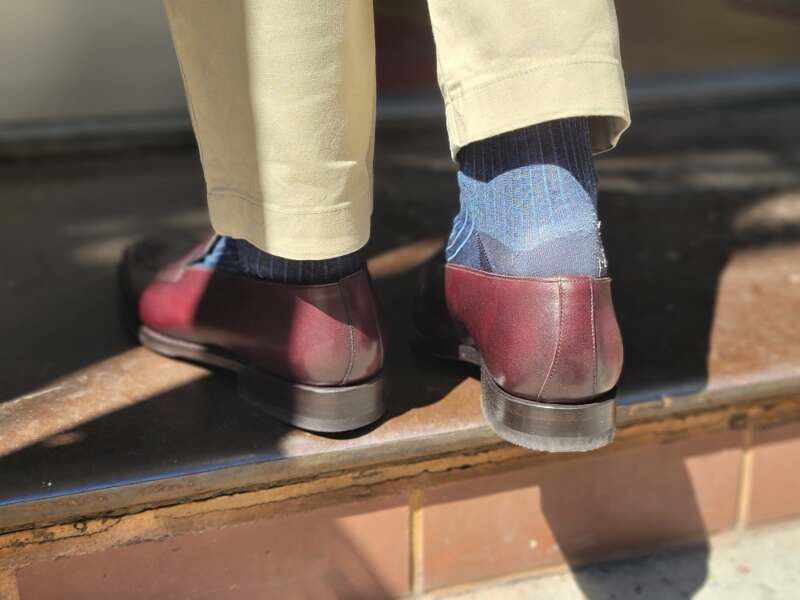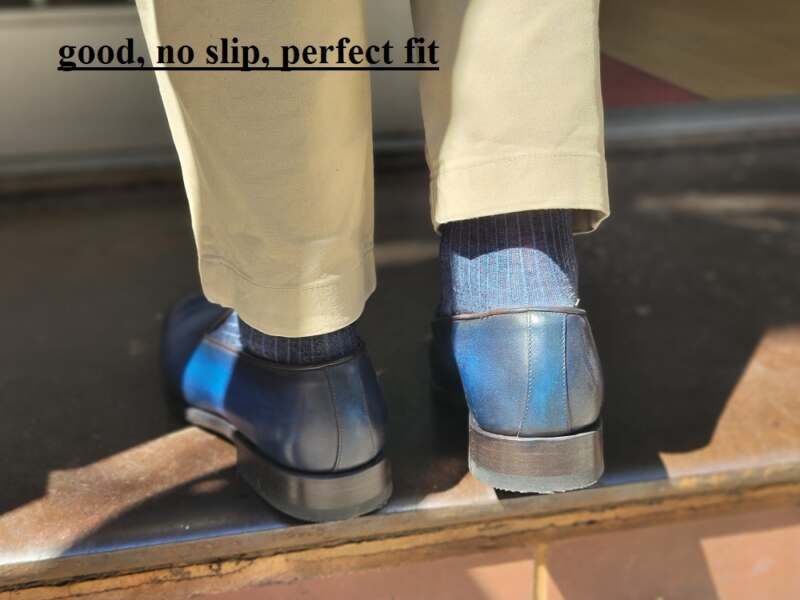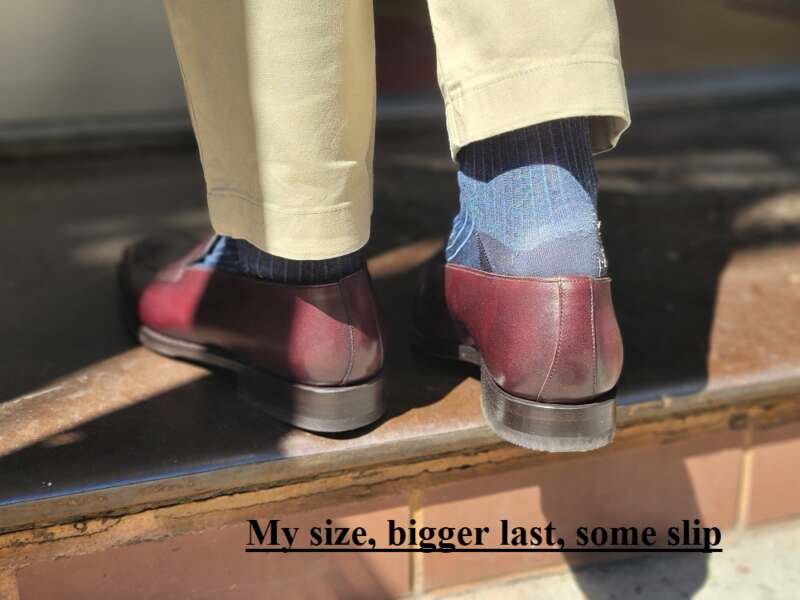Your shoe is too big
Generally speaking, there are two types of heel slip: 1. The shoes are simply too big and your heel falls right out of them and, 2. The shoes fit but the heel counter is stiff, the new leather is slippery, both causing a bit of movement on your heels but you are not really falling out of the shoes.
The question is how to tell between the two, as sometimes the line can be a fine one? On top of that, sometimes you simply have a super narrow heel and most shoes give you some sort of movement in the heel region no matter what you do.
One would think this is quite trivial but you would not imagine how many people I have fit that put on a pair of oxfords, claiming heel slip and after telling them to tighten the laces, the shoes fit just fine. So, knowing that, it would appear sometimes we need an extra opinion on heel slip, to understand which is acceptable and which is not.
Ideally, you would have none, but in a world of different feet, different lasts, and different ideas of a good fit, the heel slip arena can get tricky.

It goes without saying that if in a loafer, oxford, boot, or monkstrap, you tighten up the shoe/boot all the way and your heel falls right out, well that shoe is simply too big. You should never be able to walk out of your shoes. You should never be able to pull them off without undoing them. Monkstraps are not loafers. They are functional. If you treat them like loafers, they are too big. If you don’t care, then great!


Most people know right away when a shoe is too big. The tricky spot is that slight heel movement on one size while sizing down is just too small. You question if you are between sizes. Sometimes you might be. Sometimes you just need to break in the shoe. You see, several outcomes occur when you wear shoes and start to break them in. After some wears, the leather starts to soften up and mold to the shape of your foot, in all areas that the feet put pressure on the leather. This namely happens in the forefoot, the insole, and the heel area. Above you can see an example of a great fit with no issue and then a last slightly larger that causes some heel slip. As these are my own shoes, I know that this heel slip will eventually soften as I break those new loafers in. Others might be wary of that though.
So let’s look at the two areas that affect heel slip the most: the insole and the heel counter.
Just because it needs to be said, the insole is not to be confused with the sock liner. They are two very different things. The insole is the hard piece of leather that is supporting your foot. The sock liner is that soft piece of leather usually between the insole and your foot. Moving onwards. As you wear the shoes, the weight of your body starts to imprint your feet onto the insoles of your shoes. You essentially sink into your shoes and when doing this you drop down a little, allowing you to get a better fit overall. When you are higher up (even 1mm) and thus closer to the top collar of the shoe, the heel is able to slip more so than when you sink down and are able to get a tighter lock. So as the heel sinks, the fit is able to be more secure through tightening of the laces. If you were already at max tightening, then chances are your feet are narrow, and trying to fit medium shoes will always cause perfect fit issues. We will touch more on that below.
The heel counter is the area where the heel resides. Between the leather and the lining is another piece of material (cellastic, leatherboard, or actual leather – read more on this HERE) that is what eventually molds to the shape of your heel. But this is always stiff in the beginning and erect, so naturally, it is not gripping when brand new. As you wear the shoes this piece of material starts to take shape to your heel and when it does, combined with your sinking into the footbed, you start to get a better lock on your heel area. So, how do you know when you are at this point when trying on a brand new shoe that is giving you some heel play.
Generally speaking, unless you like to wear your shoes with an airtight grip, you will always be able to stick the tip of your finger (not the whole finger) into the back of the shoe (using that as a ‘shoe is too big idea’ is wrong). You can see this in the photos shown. I can put the tip of my finger in. I could not dream of wearing a half-size down though. If you put on the shoe, tie it as tight as it should be without suffocating, and feel slight movement in the heels then you are at this stage where the fit is right but you simply need to break them in. And it is common. And it is normal, in fact. Don’t feel because you do not have an airtight grip, that the size is not right or the shoes too big. Trying to get bespoke fit in RTW shoes is challenging. Blessed are those that fit perfectly into RTW shoes. More often than not, that small amount of heel play will work itself out. Accept it, embrace it, and know that it is okay. And if you are lucky enough to never have heel play, be grateful!


Comments
Post a Comment